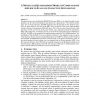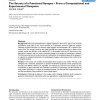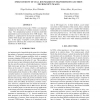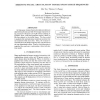179 search results - page 25 / 36 » Membrane Computing |
IPPS
1998
IEEE
14 years 2 months ago
1998
IEEE
The paper presents how the Random PROLOG Processor (RPP), a bio-inspired model of computations, can be used for formalization and analysis of a phenomenon - the Collective Intelli...
NIPS
2004
2004
Methods for Estimating the Computational Power and Generalization Capability of Neural Microcircuits
13 years 11 months ago
What makes a neural microcircuit computationally powerful? Or more precisely, which measurable quantities could explain why one microcircuit C is better suited for a particular fa...
BMCBI
2006
13 years 10 months ago
2006
Background: Neuronal communication is tightly regulated in time and in space. The neuronal transmission takes place in the nerve terminal, at a specialized structure called the sy...
ICIP
2005
IEEE
14 years 11 months ago
2005
IEEE
Transmission electron microscopy (TEM) is an important modality for the analysis of cellular structures in neurobiology. The computational analysis of neurons entail their segment...
ICIP
1998
IEEE
14 years 11 months ago
1998
IEEE
In this paper, human facial articulation models are derived from frontal and side view image sequences using connected vibrations non-rigid motion tracking algorithm. First, a 3D ...




